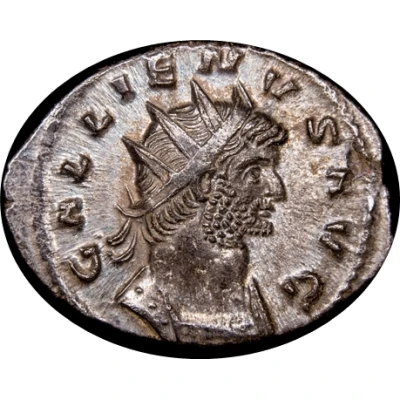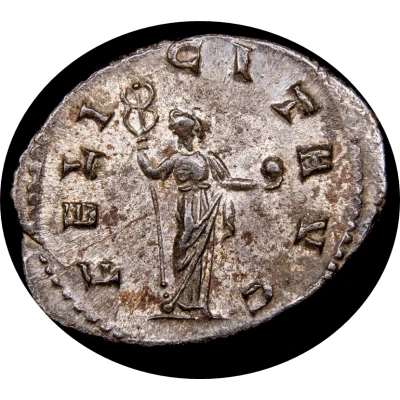Antoninianus - Gallienus COS IIII P P
| Silver | - | - |
| Issuer | Rome › Roman Empire (27 BC - 395 AD) |
|---|---|
| Emperor | Gallienus (Publius Licinius Egnatius Gallienus) (253-268) |
| Type | Standard circulation coin |
| Years | 261-268 |
| Value | Antoninianus (1) |
| Currency | Antoninianus, Reform of Caracalla (AD 215 – 301) |
| Composition | Silver |
| Shape | Round (irregular) |
| Technique | Hammered |
| Demonetized | Yes |
| Updated | 2024-10-05 |
| Numista | N#288582 |
|---|---|
| Rarity index | 100% |
Reverse
Gallienus, in quadriga, holding branch.
Script: Latin
Lettering: COS IIII P P
Translation:
Consul Quartum, Pater Patriae.
Consul for the fourth time, father of the nation.
Comment
Source:Online Coins of the Roman Empire (OCRE)
Interesting fact
The Antoninianus, also known as the "Gallienus," was a coin introduced by the Roman Emperor Gallienus in 261 AD, during a time of economic crisis and military conflict. It was made of silver, but its purity was lower than that of previous Roman silver coins, which had been minted with a higher concentration of silver. Despite this, the Antoninianus remained a widely used coin throughout the Roman Empire until the late 3rd century AD. One interesting fact about this coin is that it features an image of the Roman goddess Salus, who was associated with safety, security, and well-being. This was a deliberate choice by Gallienus, who was trying to reassure the public that his government was taking steps to address the economic and military challenges facing the empire. The image of Salus on the coin was meant to convey a sense of stability and hope during a time of uncertainty.

